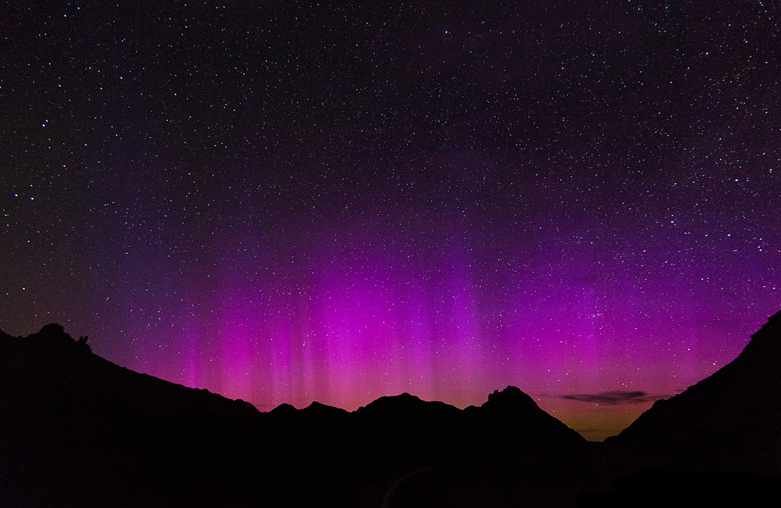Northern Lights
Beautiful, dancing lights in the sky have puzzled people for a long time. What causes the night sky to light up with moving streaks of color? These lights appear most often near the earth’s magnetic poles (you may know them as the north and south poles). In the north (the Arctic), they are called the aurora borealis or northern lights. In the south (Antarctica), they’re known as the aurora australis or southern lights.
The auroras are caused by the sun. Sunspots (cooler regions on the sun’s surface) cause solar storms. These storms send billions of tiny charged particles toward earth. But surrounding our planet is an invisible magnetic field that keeps these particles from entering our atmosphere.

By U.S. Navy photo by Electronics Technician 2nd Class Nate Madlem [Public domain], via Wikimedia Commons
Northern lights over the Arctic.
But the magnetic field lines come closest to earth near the magnetic poles. Many of the charged particles travel along these lines and enter our atmosphere at the poles. This allows these particles to react with the gas molecules high in our atmosphere. And the result is beautiful colors. These lights are normally visible only at high latitudes (near the magnetic poles), but very intense solar (sun) activity can drive auroras farther away.
The auroras can be different colors depending on what type of gas is reacting with the solar particles. Oxygen is green at low altitudes (60 miles above earth) or red at high altitudes (200 miles above earth). Nitrogen is blue or purple. The auroras can also be pink, violet, yellow, white, or orange, though these colors aren’t as common.

By NASA [Public domain], via Wikimedia Commons
Northern lights over South Dakota.
Fun Facts About the Auroras
- The best places to see the northern lights are in Northern Canada, Alaska, Iceland, Finland, Norway, or Sweden. The closer to the North Pole the better.
- Earth’s magnetic field is rapidly decaying and can’t last millions of years. The fact that we still have a magnetic field confirms that the earth is young, just like the Bible says.
- Other planets in our solar system, like Jupiter and Saturn, and even their moons can also have auroras.
- The sun has an 11-year “sun cycle,” so the strongest northern lights are seen every 11 years, at the beginning of a new cycle.
- © 2025 Answers in Genesis
- Privacy Policy
- Contact
- About
